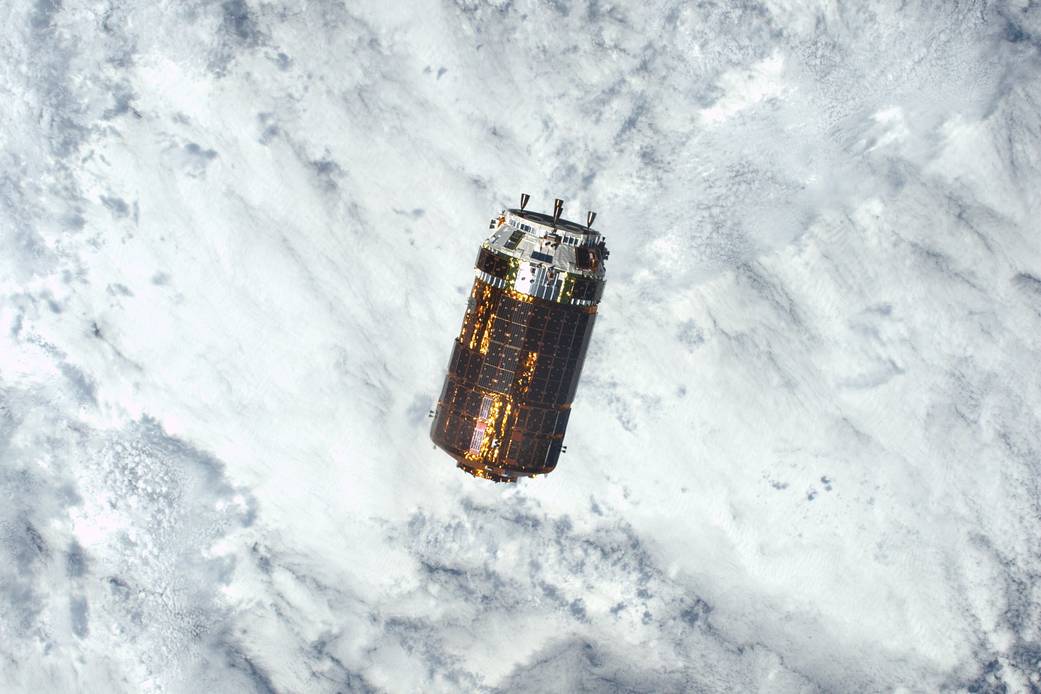
Expedition 50 Commander Shane Kimbrough of NASA shared this photograph of the Japan Aerospace Exploration Agency’s Kounotori H-II Transfer Vehicle (HTV-6) as it approached the International Space Station on Dec. 12, 2016, writing, “Beautiful #HTV6 @Space_Station. @NASA and @ESA astronauts using @csa_asc robot arm to capture @JAXA_en spacecraft. Proud of Int’l. #Teamwork”
Kimbrough and Flight Engineer Thomas Pesquet of ESA (European Space Agency) successfully captured the 12-ton spacecraft using the station’s Canadarm2 robotic arm. Robotic ground controllers then installed it on the Earth-facing side of the Harmony module. Flight Engineer Peggy Whitson of NASA monitored HTV-6 systems during the rendezvous and grapple.
The unpiloted cargo spacecraft is loaded with more than 4.5 tons of supplies, water, spare parts and experiment hardware for the six-person station crew. The spacecraft, named “Kounotori” – the Japanese word for white stork – launched Friday, Dec. 9 from the Tanegashima Space Center in southern Japan. It is also delivering six new lithium-ion batteries and adapter plates that will replace the nickel-hydrogen batteries currently used on the station to store electrical energy generated by the station’s solar arrays. These will be installed during a series of robotic operations and spacewalks between late December and mid-January.
The spacecraft also is bringing the Technology Education (TechEdSat-5) nanosatellite, which includes the Exo-Brake technology demonstration mission. The Exo-Brake technology is a tension-based, flexible braking device that could help bring small payloads back through Earth’s atmosphere unharmed, accurately de-orbiting through a series of adjustments to modulate drag. Exo-Brake deployment is targeted for early 2017.
Image Credit: NASA





























